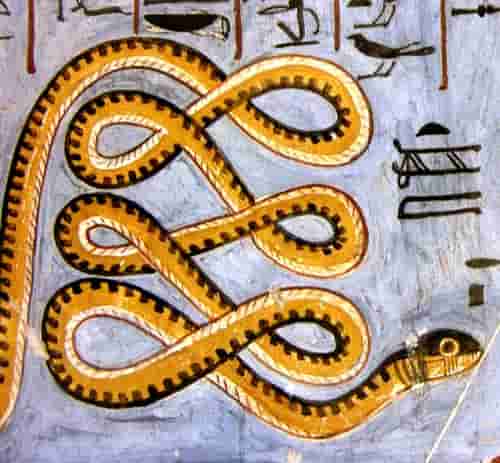Snakes are found throughout Ancient Egypt, including the desert, ancient walls, the Nile, as well as in the countryside, houses, and cattle stables.
They have posed a threat to humans and domestic animals, for which the ancient Egyptians have felt a kind of love / hate towards them, since they have been considered as protection to the King and at the same time a demon of the underworld.
A papyrus found in the Brooklyn Museum reveals that the ancient Egyptians had an intimate knowledge of snakes; in six species are recorded thirty, of which it is estimated that seven are poisonous and have been identified in modern Egypt.
Papyrus gives a physical description of each snake and its habitat, coupled with precise descriptions of the symptoms produced by each of them and the name of the god or goddess of which the serpent is considered a manifestation.
One of the poisonous snakes, which the ancient Egyptians most feared was the horned viper or sand viper. When it attacks, it scrapes its rings before leaping forward to attack and makes a harsh sound like the letter “f”, which is why the horned viper was used in the hieroglyph, to write the sound.
The Pyramid texts repeatedly allude to the threat of snakes, and they are repeated in religious texts throughout the history of Ancient Egypt; mainly attested in the First Intermediate Period, by the serpent god( Apep ), who was regarded as the enemy of order, or Maat.
Already in the reign of Ramses II, Apophis was the subject of a ritual recorded in several books of magic. During religious processions and lunar festivals, they can be seen in the images of Apophis, who is subjected to various torture, which represents the triumph of Maat over the chaos that Apophis symbolized.
However, not all snakes were considered bad; when deities were associated with poisonous snakes they were sometimes considered beneficial.
The goddess Renenutet often appeared in the form of a hooded cobra. Her name is derived from an Egyptian word meaning “nurse,” and was closely associated with the fertility of the fields, which is why she was considered the goddess of the barn.
Offerings of the first fruits were made, as well as hymns sung to the statue of Renenutet, for the harvested harvest.
Although her name appears for the first time in the Old Kingdom (in the Texts of the Pyramids), she is not represented in art until the New Kingdom.
The goddess Renenutet was worshiped by everyone in Egypt and her cult had special relevance.








